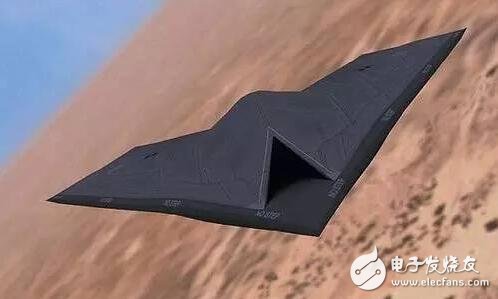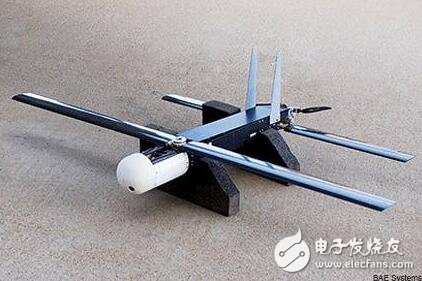1. What is the nature of the drone?
With the rapid development of information technology, drone technology has undergone tremendous changes. From remotely piloted aircraft (RPV) to unmanned aerial vehicles (UAV) to unmanned space surveillance (UAS), drone technology has moved to a new level. Singer, a US military adviser and robot expert, once said that the essence of robots is machines. Li Deyi, an academician of the Chinese Academy of Engineering, an expert in automation and artificial intelligence, also said that the three functions of the future car will be perception, cognition and action. The drone is the machine, and it also has the three elements of the car, so the drone is also called the air robot.
What is the law of development of aerial vehicles? In the past, man-machines dominated the world. In the next step, drones will make important additions to manned aircraft. In the future, drones and manned machines will depend on each other and develop synergistically. Finally, we expect the drones to dominate the world.

In the local wars in recent years, the variety and number of drones have increased dramatically, which has triggered a boom in the development of drones around the world. So, which aspect of the current drones are developing? Here, we will look at the development trend of drones from six aspects.
Second, the six development directions of drones
(1) Taking the combination of battlefield investigation and investigation and punishment as the main purpose, vigorously develop drones combined with investigation and investigation. In the development roadmap of U.S. UAVs, UAVs are divided into four types: small and medium-sized and unmanned combat. The completed tasks are also divided into eighteen. Among them, detection, precise target positioning and indication are always ranked first and second.
Now, drones shoulder the heavy responsibility of the national sentinel. About 80% of the world's equipped drones are reconnaissance aircraft. The specific work includes image detection (visible light, infrared, spectroscopy, radar, laser), signal detection, meteorological hydrology, magnetic, nuclear biochemistry and so on. Combining the two modes of detection and attack can achieve the "discovery and destruction" mode of operation. This kind of solution to embed the weapon strike module into the detection drone has attracted the attention of the military. Unmanned reconnaissance machines like Predator, Hunter and Death have begun to apply this model.
(2) With the main demand for firepower and air confrontation, vigorously develop unmanned combat aircraft. For example, like the familiar X47B, it is an unmanned combat aircraft used on the Ford-class aircraft carrier in the United States, as well as a "neuron" unmanned combat aircraft led by France and jointly developed by the six countries. In addition, there are the British "Raytheon" and the Russian "Electricity".
(3) Focusing on special investigations and “bee colony†operations, and vigorously develop micro-miniature UAV systems. Micro and small drones are strictly defined. For example, in the United States, a micro drone is a drone with a size between the eagle and a large locust. A small drone is a total takeoff weight of more than 2.3KG. A drone of less than 25KG.
In recent years, with the advent of new technologies, tiny drones have sprung up. Now, people can see all kinds of minicomputers, such as insect bionic drones like mosquitoes and butterflies. Why should we develop such a drone? Such a drone may have many uses in civilian use, but it is mainly used in the military field in the special forces "bee colony" operations.
The "bee colony" warfare has become an important development direction for the US military. Since March 2015, the US Navy has begun testing low-cost drone bee colony combat technology (LOCUST). The project uses a cheap "coyoger" type drone weighing around 6KG, and the speed is up to 145 kilometers, and it is launched by UAV cannons.

"Coyotes" drone
At present, nine UAVs have been tested for autonomous formation flight, and 30 bee colony combat tests are planned for the summer of 2016.
( 4) Taking the new power technology as the main breakthrough, and vigorously developing ultra-high-speed drones and ultra-long-term navigation systems. Ultra-high-speed drones generally refer to drones with a cruising speed greater than Mach 5 (Mach 1 is approximately 1200 km/h). Such drones require ultra-high-speed flight through a combination of rocket engines, aero engines and scramjet engines. . Ultra long-haul drones generally refer to drones with a range of more than 48 hours. The concept of this level of drones and the so-called consumer-class drones on the ultra-long-haul is completely different. Its power energy problem will be solved by solar energy, fuel cells, hydrogen engines and nuclear power. Long-haul problems.
For example, in the hydrogen engine drone system, the Boeing Company's creative liquid hydrogen powered drone, the "Ghost Eye", uses two 2.3-liter four-cylinder engines, each generating 150 horsepower. It can continue to fly for 4 days at an altitude of 20,000 meters and continuously perform surveillance and reconnaissance missions. And it is very environmentally friendly, and the by-products produced are only water. The drone took its first flight in June 2012 and continues to be tested at Edwards Air Force Base, California.

"Ghost Eye" drone
In the nuclear power long-haul UAV system, American scientists have completed the theoretical and feasibility study of a new generation of nuclear-powered drones. The new nuclear power technology not only increases the continuous flight time of drones from “days†to “monthsâ€, but also increases the power for drone weapons and control systems. Due to its long battery life, logistics support costs can be greatly reduced. Work is currently under way to improve the safety of nuclear reactors, and the future will definitely bring revolutionary changes to the power technology of drones.
Vacuum Pressure Impregnated Transformer
Introduction
SCOTECH`s Vacuum pressure impregnated transformer (VPI transformer) is non-cast insulation that provides an excellent level of environmental production. The higher thermal class of insulation provides for a compact and reliable transformer from very lower power rating up to several MVA, VPI transformer can be supplied with either aluminum or copper windings. Our VPI transformer are used in many varied applications such as industrial, renewables, railways, marine, distribution and power generation.
Advantages
Perfect solution for low voltage transformer and inductors.
From IP00-IP56 with AN, AF, ANAF, or AFWF cooling
Reliable quality
Compact size
Scope of supply
Voltage level: up to 35KV
Rating level: up to 20MVA
Standards
SCOTECH`s dry type transformers are designed and manufactured in accordance with all major international standards (IEC, ANSI, UL, CSA etc.)
Why SCOTECH
Long history- Focus on transformer manufacturing since 1934.
Technical support – 134 engineers stand by for you 24/7.
Manufacturing-advanced production and testing equipment, strict QA system.
Perfect service-The complete customer service package (from quotation to energization).
Vacuum Impregnated Transformer,Medium Voltage Dry Type Transformer,Vacuum Pressure Impregnated Transformer,Vacuum Pressure Impregnated Dry Type Transformer
Jiangshan Scotech Electrical Co.,Ltd , https://www.scotech.com